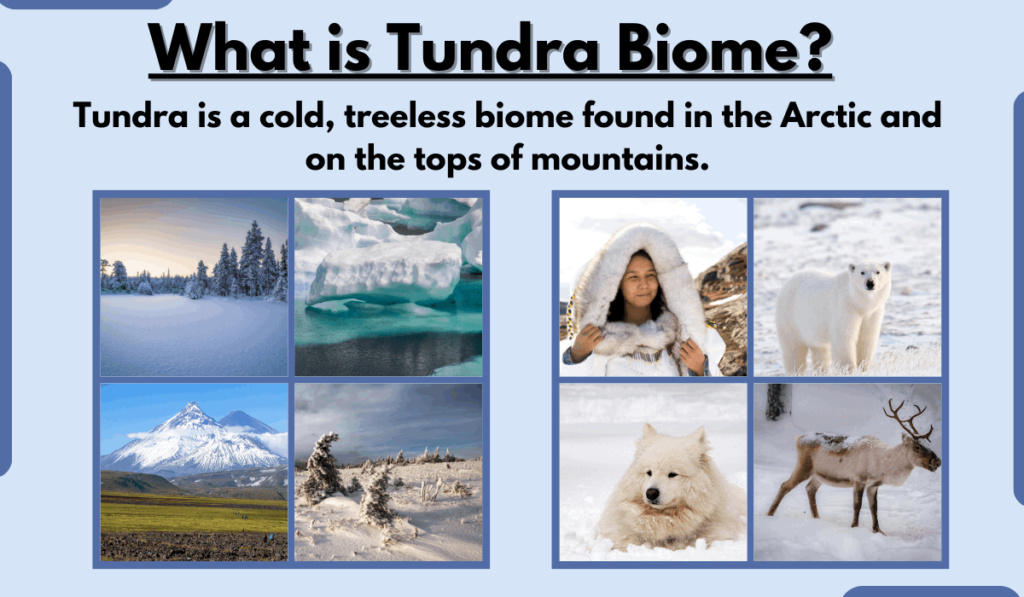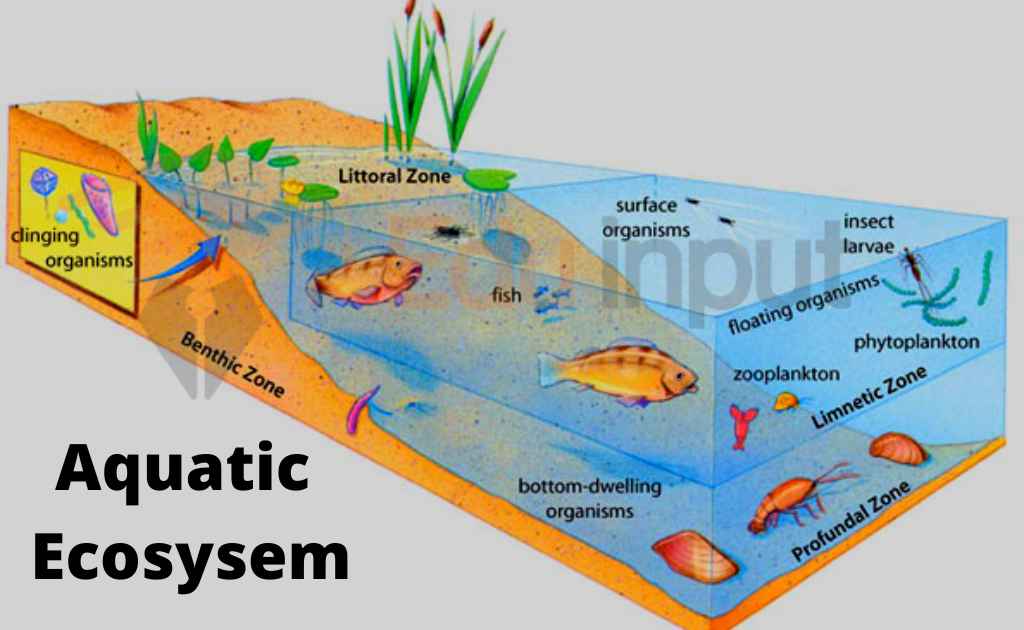Tundra Biome-Characteristics, Types, Location, Climate, and Examples
Tundra Biome Definition
The tundra is a cold, treeless biome found in the Arctic and on the tops of mountains. It is characterized by a short growing season, low precipitation, and permafrost.
The word “tundra” comes from the Finnish word “tunturi,” which means “treeless plain.” The tundra is the coldest of all the biomes, and it is home to a unique variety of plants and animals.

Characteristics of Tundra Biome
The tundra has a number of characteristics that make it a unique biome. These include:
1. Short growing season
The tundra has a very short growing season, typically lasting only 2-3 months. This is because the temperatures are too cold for plants to grow for most of the year.
2. Low precipitation
The tundra receives very little precipitation, typically less than 25 centimeters (10 inches)(150 to 250 mm a year including melted snow) per year. This is because the air is cold and dry, and the mountains block the passage of moist air from the oceans. [source]
3. Permafrost
Permafrost is a layer of permanently frozen soil that underlies the tundra. It is formed when the ground freezes in the winter and does not thaw completely in the summer.
4. Wind
The tundra is a windy place, with strong winds that can whip up the snow and dust.
5. Low biodiversity
The tundra has a low biodiversity, meaning that there are fewer species of plants and animals than in other biomes. This is because the harsh conditions make it difficult for many species to survive.
Types of Tundra Biome
There are two main types of tundra biomes:
1. Arctic tundra
The Arctic tundra is found in the Arctic regions of North America, Europe, and Asia. It is the largest type of tundra biome.
2. Alpine tundra
The alpine tundra is found on the tops of mountains. It is smaller than the Arctic tundra, but it is found in many different parts of the world.
Tundra Biome Location
The tundra biome is found in the following locations:
- Arctic regions of North America, Europe, and Asia
- Tops of mountains in many parts of the world, including the Rocky Mountains, the Alps, and the Himalayas
- Antarctica
Tundra Biome Climate
The climate of the tundra is cold and dry. The average temperature in the Arctic tundra is -20 degrees Celsius (-4 degrees Fahrenheit). The average temperature in the alpine tundra is -10 degrees Celsius (14 degrees Fahrenheit).
The temperature in the tundra can vary greatly depending on the season. In the winter, the temperatures can drop below -50 degrees Celsius (-58 degrees Fahrenheit). In the summer, the temperatures can rise to 10 degrees Celsius (50 degrees Fahrenheit).
Tundra Biome Vegetation
The vegetation in the tundra is adapted to the cold, dry climate. The plants are low-growing and have a short growing season. Some common tundra plants include:
- Lichens
- Mosses
- Grasses
- Shrubs
- Flowers
The tundra is also home to a number of wildflowers, which bloom in the summer when the days are long and the sun is strong.
Tundra Biome Animals
The animals in the tundra are also adapted to the cold, dry climate. Some common tundra animals include:
- Caribou
- Musk oxen
- Polar bears
- Arctic foxes
- Snow geese
- Reindeer
Interesting Facts about Tundra Biome
Here are some interesting facts about the tundra biome:
- The tundra is the largest biome in the world, covering about 20% of the Earth’s land surface.
- The tundra is a very important ecosystem, as it helps to regulate the Earth’s climate.
- The tundra is also a very fragile ecosystem, and it is easily damaged by human activities.
- The tundra is home to the world’s largest land animal, the musk ox. Musk oxen are social animals that live in herds of up to 30 individuals. They have thick fur that helps them to stay warm in the cold winter weather.
- The tundra is also home to the world’s smallest deer, the caribou. Caribou are migratory animals that travel long distances in search of food. They have large antlers that they use to defend themselves from predators.
Also learn about:
FAQs
Where is the tundra located?
Tundra primarily spans across the arctic and subarctic regions of the Northern Hemisphere, encompassing:
North America: Northern Canada, Alaska
Europe: Northern Scandinavia, Russia
Asia: Northern Siberia

 written by
written by 



Leave a Reply